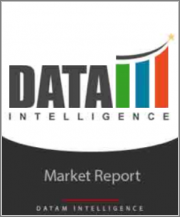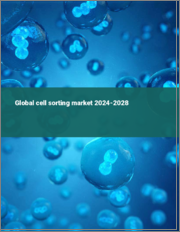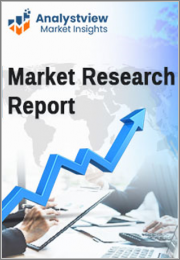
|
시장보고서
상품코드
1297797
세계의 세포 선별 시장(2023-2030년)Global Cell Sorting Market - 2023-2030 |
||||||
시장 개요
세계 세포 선별 시장은 2022년 2억 3,650만 달러에 달할 것으로 예상되며, 2030년에는 3억 8,980만 달러로 성장할 것으로 예상됩니다. 세포 선별 세계 시장은 2023-2030년 예측 기간 동안 6.6%의 CAGR을 보일 것으로 예상됩니다.
세포 선별은 연구, 임상 진단 및 치료에서 다양한 용도로 사용됩니다. 줄기세포나 순환 종양 세포와 같은 희귀한 세포군을 분리하여 추가 분석을 가능하게 합니다. 또한, 세포 기반 의약품 개발이나 면역 세포 집단 연구와 같은 치료적 용도로 특정 세포 유형을 쉽게 정제할 수 있습니다.
그러나 높은 장비 가격, 엄격한 규제, 숙련된 인력 부족, 신흥국에서의 세포 선별 기술에 대한 인식 부족 등이 세포 선별 시장의 성장을 저해하는 요인으로 작용하고 있습니다.
시장 역학
만성질환 부담 증가로 예측 기간 동안 세계 세포 선별 시장 성장 견인
미국 성인의 60% 가까이가 적어도 한 가지 이상의 만성질환을 앓고 있습니다. 미국의 주요 사망 원인은 당뇨병, 암, 심혈관 질환과 같은 만성 질환입니다. 심장병, 암, 뇌졸중, 만성폐쇄성폐질환, 당뇨병은 전체 사망원인의 3분의 2 이상을 차지합니다.
CDC에 따르면, 미국 연간 의료비 3조 8,000억 달러의 90%가 만성 질환 및 정신 건강 문제를 가진 사람들에게서 발생하며, Partnership to Fight Chronic Disease의 최근 보고서에 따르면, 2030년까지 미국에서 가장 많이 발생하는 7대 만성 질환에 대한 만성질환의 치료비용은 연간 2조 달러, 1인당 8,600달러에 달할 것으로 예상했습니다. 보고서에 따르면, 유해한 행동을 줄이면 연간 110만 명의 사망을 예방할 수 있다고 합니다.
성장하는 바이오 제약 산업이 예측 기간 동안 세계 세포 선별 시장의 성장을 견인
미국 최대 산업 중 하나인 바이오의약품은 연간 수십억 달러의 가치가 있으며, 미국 경제와 그 제품을 사용하는 환자에게 매우 중요합니다. 이 사업은 CDMO 바이오로직스 기업의 출현으로 이전보다 더 빠르게 의약품을 생산할 수 있게 되면서 엄청난 성장을 경험하고 있습니다.
이 산업의 확장은 세계 인구의 증가에 기인합니다. 세계 인구의 수요는 바이오의약품 사업에 대한 압력을 높이고 있지만, 동시에 더 많은 투자를 유치하고 수익성을 높이고 확장할 수 있도록 하고 있습니다.
개별화 의료의 확대로 세계 세포 선별 시장 성장 기회 제공
개인화 의료는 진단, 투약, 예방에 대한 '개인 맞춤형' 접근 방식을 바꿀 수 있습니다. 환자별 특성에 기반한 표적치료가 맞춤의료의 목표입니다. 맞춤형 치료를 위해 특정 세포 유형을 식별하고 분리하는 것은 세포 선별 기술에 크게 의존하고 있습니다. 맞춤의료가 성장함에 따라 세포 선별 기술에 대한 수요는 증가할 것으로 예상됩니다.
COVID-19 영향 분석
COVID-19 팬데믹은 세포 선별 시장에 긍정적인 영향을 미쳤습니다. COVID-19가 면역 반응의 변동성과 다양한 세포 유형에 미치는 영향은 세포 선별를 포함한 단일 세포 분석 기술을 통해 광범위하게 연구되고 있습니다. 팬데믹은 개별 세포의 특성과 반응에 대한 이해의 필요성을 강조함으로써 단일 세포 분석 기술을 강화하고 세포 선별 기술에 대한 수요를 증가시켰습니다.
러시아-우크라이나 분쟁 분석
러시아와 우크라이나의 전쟁이 세포 선별 시장에 미치는 영향은 복잡하고 다면적입니다. 분쟁과 그 여파로 인해 영향을 받는 지역의 의료 인프라 구축에 필요한 자원, 관심, 자금이 전용될 수 있습니다. 이는 세포 선별과 같은 첨단 기술이 의료 및 연구 분야에서 채택되고 사용되는 방식에 영향을 미칠 수 있습니다.
목차
제1장 조사 방법과 조사 범위
제2장 정의와 개요
제3장 주요 요약
제4장 시장 역학
- 영향요인
- 성장 촉진요인
- 만성질환 검사 증가
- 성장 억제요인
- 높은 비용과 서비스
- 기회
- 기술 진보
- 영향 분석
- 성장 촉진요인
제5장 산업 분석
- Porter's 5 Force 분석
- 공급망 분석
- 미충족 수요
- 규제 분석
제6장 COVID-19 분석
제7장 러시아·우크라이나 전쟁 분석
제8장 인공 지능 분석
제9장 기술별
- 형광 활성화 세포 선별(FACS)
- 자기 활성화 세포 선별(MACS)
- 마이크로 전기기계 시스템(MEMS) 마이크로플루이딕스 공학
- 밀도 구배 원심법
- 면역 밀도 세포 분리
- 침강
- 기타
제10장 제품·서비스별
- 셀 소터
- 세포 선별 시약·소모품
- 세포 선별 서비스
제11장 용도별
- 임상 용도
- 연구 용도
- 면역학 및 암 연구
- 줄기세포 연구
- Drug Discovery 연구
- 기타 연구 용도
제12장 최종사용자별
- 연구기관
- 제약·바이오테크놀러지 기업
- 병원· 임상 검사 기관
- 의학부 및 학술기관
제13장 지역별
- 북미
- 미국
- 캐나다
- 멕시코
- 유럽
- 독일
- 영국
- 프랑스
- 이탈리아
- 스페인
- 기타 유럽
- 남미
- 브라질
- 아르헨티나
- 기타 남미
- 아시아태평양
- 중국
- 인도
- 일본
- 호주
- 기타 아시아태평양
- 중동 및 아프리카
제14장 경쟁 상황
- 경쟁 시나리오
- 제품 벤치마크
- 기업 점유율 분석
- 주요 발전과 전략
제15장 기업 개요
- Bio-Rad Laboratories, Inc.
- 기업 개요
- 제품 포트폴리오와 설명
- 재무 개요
- 주요 발전
- Sony Biotechnology Inc.
- BD
- Merck KGaA
- Danaher Corporation
- Miltenyi Biotec GmbH
- Affymetrix, Inc
- Sysmex Partec GmbH
- On-Chip Biotechnologies Co., Ltd.
- Thermo Fisher Scientific
제16장 부록
ksm 23.07.11Market Overview
The Global Cell Sorting Market reached US$ 236.5 million in 2022 and is projected to witness lucrative growth by reaching up to US$ 389.8 million by 2030. The Global Cell Sorting Market is expected to exhibit a CAGR of 6.6% during the forecast period 2023-2030.
Cell sorting has numerous applications in research, clinical diagnostics, and therapeutics. It makes it possible to separate rare cell groups, including stem cells or circulating tumor cells, for further analysis. Additionally, it makes it easier to purify particular cell types for therapeutic uses like developing cell-based medicines or researching immune cell populations.
However, the high cost of devices, stringent regulations, lack of skilled personnel and lack of awareness of cell sorting technology in developing countries are some factors hindering the growth of the cell sorting market.
Market Dynamics
The Rising Chronic Disease Burden is Boosting the Global Cell Sorting Market Growth During the Forecast Period
Nearly 60% of American adults suffer from at least one chronic illness. The major causes of death in the US include chronic diseases like diabetes, cancer, and cardiovascular disease. Heart disease, cancer, stroke, chronic obstructive pulmonary disease, and diabetes account for over two-thirds of all fatalities.
According to the CDC, 90% of the nation's $3.8 trillion in annual healthcare costs are attributable to persons with chronic illnesses and mental health issues. According to a recent report by the Partnership to Fight Chronic Disease, by 2030, the expense of treating the seven most prevalent chronic diseases in the United States will total $2 trillion annually or $8,600 per person. According to the same report, reducing harmful behaviors might prevent 1,100,000 deaths annually.
The Growing Biopharmaceutical Industry is Boosting the Global Cell Sorting Market Growth During the Forecast Period
One of the largest industries in America is biopharma, which is worth billions of dollars annually and is crucial to the American economy and the patients who use their products. This business is experiencing tremendous expansion due to the emergence of CDMO Biologics companies, which are generating pharmaceuticals more quickly than before.
The expansion of this industry is also attributed to an expanding world population. The demand from the world's population has increased pressure on the biopharma business, but it has also allowed it to attract more investment, increase profitability, and expand.
The Expansion of Personalized Medicine Provides the Global Cell Sorting Market Growth Opportunities
With personalized medicine, it's possible to transform a "one size fits all" approach to diagnosis, medication, and prevention into an individualized one. Targeted treatments based on unique patient traits are the goal of personalized medicine. Identifying and isolating particular cell types for customized therapeutics depend heavily on cell sorting technology. The demand for cell sorting technology is anticipated to rise as personalized medicine grows.
COVID-19 Impact Analysis
The COVID-19 pandemic has had a positive impact on the cell sorting market. The variability of the immune response and the effects of COVID-19 on various cell types have been extensively studied using single-cell analytic techniques, including cell sorting. The pandemic has enhanced single-cell analysis techniques and increased demand for cell sorting technology by highlighting the need to comprehend individual cells' traits and reactions.
Russia-Ukraine Conflict Analysis
The impact of the Russia-Ukraine war on the cell sorting market is complex and multifaceted. Resources, attention, and finance for the construction of healthcare infrastructure in the impacted areas may be diverted by the conflict and its aftermath. This might affect how cutting-edge technologies, like cell sorting, are adopted and used in healthcare and research contexts.
Segment Analysis
The Global Cell Sorting Market is segmented based on technology, product and services, application, End-user, and region.
The Fluorescence-Activated Cell Sorting (FACS) Segment is Expected to Hold a Dominant Position in the Market Over the Forecast Period
The fluorescence-activated cell sorting (FACS) segment accounted for the highest market stake, accounting for approximately 43.6% of the cell sorting market in 2022. The flow cytometry technique, fluorescence-activated cell sorting (FACS), is specialized. Using the unique light scattering and fluorescence properties of each cell, it offers a way for dividing a heterogeneous mixture of living cells into two or more containers, one cell at a time.
It is a practical scientific tool since it allows for the quick, accurate, and quantitative recording of fluorescence signals from individual cells as well as the physical segregation of cells of specific interest.
Geographical Analysis
Increasing Collaborations And Product Launches by the Key Players, and Increasing FDA Approvals, Dominate the North American Region
North America is expected to dominate the cell sorting market, accounting for around 39.6%. The market player applies strategies such as product launches and collaboration to expand their business.
For instance, in January 2023, Thermo Fisher Scientific, the leader in serving science, launched the Bigfoot Spectral Cell Sorter in India. The groundbreaking cell sorting system combines spectral sorting and analysis with traditional sorting to produce quick, simple-to-use cell sorting.
Competitive Landscape
The major global players in the market include: Bio-Rad Laboratories, Inc., Sony Biotechnology Inc., BD, Merck KGaA, Danaher Corporation, Miltenyi Biotec GmbH, Affymetrix, Inc., Sysmex Partec GmbH, On-Chip Biotechnologies Co., Ltd., Thermo Fisher Scientific among others.
Why Purchase the Report?
- To visualize the Global Cell Sorting Market segmentation based on the technology, product and services, application, End-user, and region and understand key commercial assets and players.
- Identify commercial opportunities by analyzing trends and co-development.
- Excel data sheet with numerous data points of cell sorting market-level with all segments.
- PDF report consists of a comprehensive analysis after exhaustive qualitative interviews and an in-depth study.
- Product mapping available as Excel consisting of key products of all the major players.
The Global Cell Sorting Market Report Would Provide Approximately 69 Tables, 70 Figures And 195 pages.
Target Audience 2023
- Manufacturers/ Buyers
- Industry Investors/Investment Bankers
- Research Professionals
- Emerging Companies
Table of Contents
1. Methodology and Scope
- 1.1. Research Methodology
- 1.2. Research Objective and Scope of the Report
2. Definition and Overview
3. Executive Summary
- 3.1. Snippet by Technology
- 3.2. Snippet by Product and Services
- 3.3. Snippet by Application
- 3.4. Snippet by End-user
- 3.5. Snippet by Region
4. Dynamics
- 4.1. Impacting Factors
- 4.1.1. Drivers
- 4.1.1.1. Increasing number of chronic disease testing
- 4.1.2. Restraints
- 4.1.2.1. High costs and services
- 4.1.3. Opportunity
- 4.1.3.1. Technological advancements
- 4.1.4. Impact Analysis
- 4.1.1. Drivers
5. Industry Analysis
- 5.1. Porter's 5 Forces Analysis
- 5.2. Supply Chain Analysis
- 5.3. Unmet Needs
- 5.4. Regulatory Analysis
6. COVID-19 Analysis
- 6.1. Analysis of COVID-19
- 6.1.1. Scenario Before COVID-19
- 6.1.2. Scenario During COVID-19
- 6.1.3. Scenario Post COVID-19
- 6.2. Pricing Dynamics Amid COVID-19
- 6.3. Demand-Supply Spectrum
- 6.4. Government Initiatives Related to the Market During the Pandemic
- 6.5. Manufacturers' Strategic Initiatives
- 6.6. Conclusion
7. Russia-Ukraine War Analysis
8. Artificial Intelligence Analysis
9. By Technology
- 9.1. Introduction
- 9.1.1. Market Size Analysis and Y-o-Y Growth Analysis (%), By Technology
- 9.1.2. Market Attractiveness Index, By Technology
- 9.2. Fluorescence-activated cell sorting (FACS)*
- 9.2.1. Introduction
- 9.2.2. Market Size Analysis and Y-o-Y Growth Analysis (%)
- 9.3. Magnetic-activated cell sorting (MACS)
- 9.4. Micro-Electromechanical Systems (MEMS) Microfluidics
- 9.5. Density Gradient Centrifugation
- 9.6. Immunodensity Cell Separation
- 9.7. Sedimentation
- 9.8. Others
10. By Product and Services
- 10.1. Introduction
- 10.1.1. Market Size Analysis and Y-o-Y Growth Analysis (%), By Product and Services
- 10.1.2. Market Attractiveness Index, By Product and Services
- 10.2. Cell Sorters*
- 10.2.1. Introduction
- 10.2.2. Market Size Analysis and Y-o-Y Growth Analysis (%)
- 10.3. Cell Sorting Reagents & Consumables
- 10.4. Cell Sorting Services
11. By Application
- 11.1.1. Market Size Analysis and Y-o-Y Growth Analysis (%), By Application
- 11.1.2. Market Attractiveness Index, By Application
- 11.2. Clinical Applications*
- 11.2.1. Introduction
- 11.2.2. Market Size Analysis and Y-o-Y Growth Analysis (%)
- 11.3. Research Applications
- 11.3.1. Immunology & Cancer Research
- 11.3.2. Stem Cell Research
- 11.3.3. Drug Discovery
- 11.3.4. Other Research Applications
12. By End user
- 12.1. Introduction
- 12.1.1. Market Size Analysis and Y-o-Y Growth Analysis (%), By End user
- 12.1.2. Market Attractiveness Index, By End user
- 12.2. Research Institutes*
- 12.2.1. Introduction
- 12.2.2. Market Size Analysis and Y-o-Y Growth Analysis (%)
- 12.3. Pharmaceutical & Biotechnology Companies
- 12.4. Hospitals and Clinical Testing Laboratories
- 12.5. Medical Schools and Academic Institutions
13. By Region
- 13.1. Introduction
- 13.1.1. Market Size Analysis and Y-o-Y Growth Analysis (%), By Region
- 13.1.2. Market Attractiveness Index, By Region
- 13.2. North America
- 13.2.1. Introduction
- 13.2.2. Key Region-Specific Dynamics
- 13.2.3. Market Size Analysis and Y-o-Y Growth Analysis (%), By Technology
- 13.2.4. Market Size Analysis and Y-o-Y Growth Analysis (%), By Product and Services
- 13.2.5. Market Size Analysis and Y-o-Y Growth Analysis (%), By Application
- 13.2.6. Market Size Analysis and Y-o-Y Growth Analysis (%), By End user
- 13.2.7. Market Size Analysis and Y-o-Y Growth Analysis (%), By Country
- 13.2.7.1. The U.S.
- 13.2.7.2. Canada
- 13.2.7.3. Mexico
- 13.3. Europe
- 13.3.1. Introduction
- 13.3.2. Key Region-Specific Dynamics
- 13.3.3. Market Size Analysis and Y-o-Y Growth Analysis (%), By Technology
- 13.3.4. Market Size Analysis and Y-o-Y Growth Analysis (%), By Product and Services
- 13.3.5. Market Size Analysis and Y-o-Y Growth Analysis (%), By Application
- 13.3.6. Market Size Analysis and Y-o-Y Growth Analysis (%), By End user
- 13.3.7. Market Size Analysis and Y-o-Y Growth Analysis (%), By Country
- 13.3.7.1. Germany
- 13.3.7.2. The U.K.
- 13.3.7.3. France
- 13.3.7.4. Italy
- 13.3.7.5. Spain
- 13.3.7.6. Rest of Europe
- 13.4. South America
- 13.4.1. Introduction
- 13.4.2. Key Region-Specific Dynamics
- 13.4.3. Market Size Analysis and Y-o-Y Growth Analysis (%), By Technology
- 13.4.4. Market Size Analysis and Y-o-Y Growth Analysis (%), By Product and Services
- 13.4.5. Market Size Analysis and Y-o-Y Growth Analysis (%), By Application
- 13.4.6. Market Size Analysis and Y-o-Y Growth Analysis (%), By End user
- 13.4.7. Market Size Analysis and Y-o-Y Growth Analysis (%), By Country
- 13.4.7.1. Brazil
- 13.4.7.2. Argentina
- 13.4.7.3. Rest of South America
- 13.5. Asia-Pacific
- 13.5.1. Introduction
- 13.5.2. Key Region-Specific Dynamics
- 13.5.3. Market Size Analysis and Y-o-Y Growth Analysis (%), By Technology
- 13.5.4. Market Size Analysis and Y-o-Y Growth Analysis (%), By Product and Services
- 13.5.5. Market Size Analysis and Y-o-Y Growth Analysis (%), By Application
- 13.5.6. Market Size Analysis and Y-o-Y Growth Analysis (%), By End user
- 13.5.7. Market Size Analysis and Y-o-Y Growth Analysis (%), By Country
- 13.5.7.1. China
- 13.5.7.2. India
- 13.5.7.3. Japan
- 13.5.7.4. Australia
- 13.5.7.5. Rest of Asia-Pacific
- 13.6. Middle East and Africa
- 13.6.1. Introduction
- 13.6.2. Key Region-Specific Dynamics
- 13.6.3. Market Size Analysis and Y-o-Y Growth Analysis (%), By Technology
- 13.6.4. Market Size Analysis and Y-o-Y Growth Analysis (%), By Product and Services
- 13.6.5. Market Size Analysis and Y-o-Y Growth Analysis (%), By Application
- 13.6.6. Market Size Analysis and Y-o-Y Growth Analysis (%), By End user
14. Competitive Landscape
- 14.1. Competitive Scenario
- 14.2. Product Benchmarking
- 14.3. Company Share Analysis
- 14.4. Key Developments and Strategies
15. Company Profiles
- 15.1. Bio-Rad Laboratories, Inc.*
- 15.1.1. Company Overview
- 15.1.2. Product Portfolio and Description
- 15.1.3. Financial Overview
- 15.1.4. Key Developments
- 15.2. Sony Biotechnology Inc.
- 15.3. BD
- 15.4. Merck KGaA
- 15.5. Danaher Corporation
- 15.6. Miltenyi Biotec GmbH
- 15.7. Affymetrix, Inc
- 15.8. Sysmex Partec GmbH
- 15.9. On-Chip Biotechnologies Co., Ltd.
- 15.10. Thermo Fisher Scientific
LIST NOT EXHAUSTIVE
16. Appendix
- 16.1. About Us and Services
- 16.2. Contact Us
















